The Art of Fugue (BWV 1080), Transcriptions of the Conterpoints for Organ
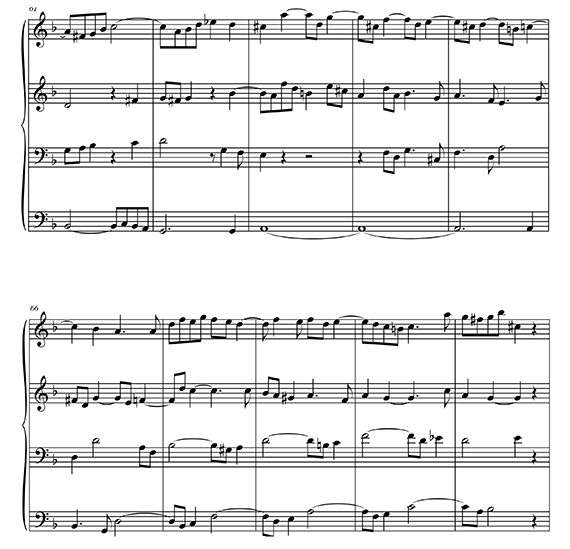
This first edition of The Art of the Fugue, part of the "Bach in colour" collection, is for any organists who might wish to embark upon the perilous adventure of a concert performance.
Most four-part editions of The Art of the Fugue use four clefs, the soprano clef, the alto clef, the tenor clef and the bass clef.
Before you can tackle this complex music you will first need to do some "solfege exercises", because few musicians nowadays are still capable of reading these different clefs at the same time. I have produced this edition of The Art of the Fugue using only treble and bass clefs in order to get over this first obstacle and this is also why I have carried out this transcription making no changes to the clefs in the various parts.
Although the two-clef edition published by Boosey & Hawkes (1951), uses changes of clef in the musical discourse; es- sentially in the alto and tenor parts, this often only affects a few notes (Counterpoint IV, T, bar 41: 5 notes; Counterpoint V, T, bars 60 and 61: 2 notes; Counterpoint VII, A, bar 60: 5 notes; or sometimes even just a single note (Counterpoint X, T, bar 37.).
I must admit that even when a number of bars are involved, this way of tackling the transcription offers more drawbacks than advantages - the biggest problem with it, I feel, is that the linearity of the melody is broken and the contrapuntal design is cut short.
So, if I repeat the last example I mentioned, this "A" which is a flight of fancy, an opening in the musical discourse - which should be thrown out, like a cry, in the performance - is portrayed misleadingly in the score by a note which is some way below the one before it. When tackling this music, the performer must be able to stand adding a few unusual additional lines, especially as in most cases they come up as part of a compound linear continuity which presents no rea- ding difficulties. In fact, using this transcription technique, I am going back to the spirit of the original four-clef score.
Do we need to come up with an instrumental way of playing this "bible"? The music was undoubtedly written for the eclectic enjoyment of just one person, indeed it is the fact that this music has to be taken mentally on board and assimila- ted by a single mind which makes it so difficult and, above all, so mentally tiring.
This is not just a matter of personal bias - the organ is the only instrument which allows this music to be performed by a single person. The harpsichord - so dear to G. Leonhardt - would be acceptable but that instrument comes up against the problem of holding long note values (Counterpoints VII, IX, XII, XIX).
Here I am giving the quintessence of The Art of the Fugue, in other words all of the four-part counterpoints.
A longer performance would be absurd, unnecessary, too tiring for the performer and too demanding for the audience!
The Art of the Fugue (BWV 1080), Transcription of the Four-Part Counterpoints using treble and bass Clefs, for the organ, by Claude Charlier.
Send by Email after Payment : 20,00 €.
© musicologie.org
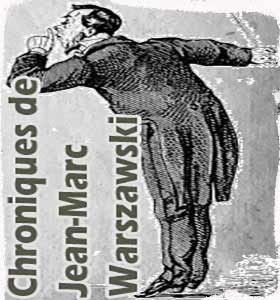
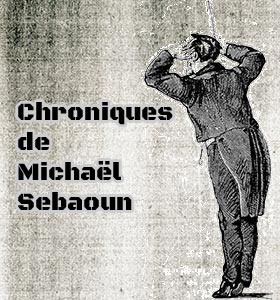
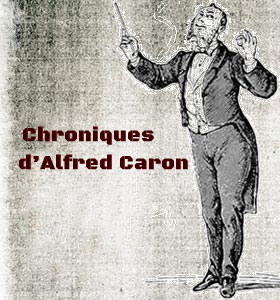
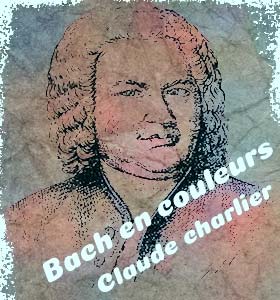
Les publications de Claude Charlier
L'Art de la fugue, transcription des Contrepoints à quatre parties, à l'usage de l'orgue. Éditions BEC F 2016, Claude Charlier.
L'Art de la fugue, transcription des Contrepoints à quatre parties à l'usage de deux pianos. Éditions BEC F 2016, Claude Charlier.
Les Inventions à 2 voix de Jean-Sébastien Bach : édition musicale analytique entièrement colorée. « Bach en couleur », Éditions Jacquart, Godarville, juin 2009 (commentaires en français et en anglais.
Les Sinfoniae à 3 voix de Jean-Sébastien Bach : édition musicale analytique entièrement colorée. « Bach en couleur », Éditions Jacquart, Godarville, septembre 2009 (commentaires en français et en anglais).
Le clavier bien tempréré, livre I. Edition en couleurs raisonnée et argumentée en fonction des critères d'analyse utilisés au dix-huitième siècle Analyse structurelle par Claude Charlier. En cahiers séparés.
Le clavier bien tempréré, livre II. Edition en couleurs raisonnée et argumentée en fonction des critères d'analyse utilisés au dix-huitième siècle Analyse structurelle par Claude Charlier. En cahiers séparés.
Transcription de sept fugues du Clavier bien Tempéré de J.-S. Bach pour orgue (BWV 859, 861, 863, 867, 871, 874, 878). Éditions Jacquart, Godarville 2009.
Transcription pour orgue de sept fugues du Clavier bien tempéré de J.-S. Bach (série II). BWV 849, 857, 865, 869, 876, 886, 891. Édition musicologie.org 2014.
L'Art de la fugue (BWV 1080) : transcription des contrepoints à quatre parties, réalisée à l'aide des clés de sol deuxième ligne et de fa quatrième ligne, « pour l'esprit et pour les yeux ». Analyse structurelle. Édition Bach en Couleur 2018.
Jean-Philippe Rameau, Six concerts transcrits en sextuors.
En anglais
The Art of the Fugue (BWV 1080), Transcription of the Four-Part Counterpoints using treble and bass Clefs, for the organ, by Claude Charlier.
The Art of Fugue (BWV 1080), Transcriptions of the Conterpoints for two Pianos or Piano four hands, by Claude Chartier.
J.- S. Bach in colour : The Well-Tempered Clavier I, BWV 846-869. A coloured edition, analysed and defended according to the criteria that were in use during the eighteenth century. Structural analysis.
J.- S. Bach in colour : The Well-Tempered Clavier II, BWV 870-893. A coloured edition, analysed and defended according to the criteria that were in use during the eighteenth century. Structural analysis.
Les Inventions à 2 voix de Jean-Sébastien Bach : édition musicale analytique entièrement colorée. « Bach en couleur », Éditions Jacquart, Godarville, juin 2009 (commentaires en français et en anglais.
Les Sinfoniae à 3 voix de Jean-Sébastien Bach : édition musicale analytique entièrement colorée. « Bach en couleur », Éditions Jacquart, Godarville, septembre 2009 (commentaires en français et en anglais).
The Art of Fugue (BWV 1080), Transcription of the four-part Counterpoints, using treble and bass clefs, "For the mind and for the eyes". Structural analysis. Éditions Bach en Couleur 2018.
En allemand
J. S. Bach in Farben : Inventionen BWV 772 - 786. Éditions Jacquart, Ausgabe in Farbe analysiert und kommentiert Anhand der im 18. Jahrhundert angewandten Analysekriterien. Strukturelle Analyse. Éditions Jacquart, Godarville 2012.
Accès libre et gratuit
J.-S. Bach, le père de la fugue à un seul sujet ! ou Des chiffres et des lettres sans aucun symbole. Musicologie.org, 8 février 2013.
Analyse de la dernière fugue pour orgue (BWV 547/2) de J.-S. Bach : De l'augmentation. Musicologie.org, Montreuil 6 février 2012.
Analyse de la vingtième fugue (BWV 865/2) du Clavier bien Tempéré de J.-S. Bach : Du canon. Musicologie.org, Montreuil 26 décembre 2012.
Une analyse très libre du premier prélude en do majeur (BWV 870/1) du second Livre du Clavier bien tempéré de J.-S. Bach. Musicologie.org, Montreuil 12 décembre 2011
Un hommage du grand J.-S. Bach à François Couperin le Grand : Ou une analyse stylistique de la seconde partie de la Fantaisie pour orgue en sol majeur (BWV 572) de J.-S. Bach. Musicologie.org, Montreuil 27 novembre 2011.
Bach en Couleurs : Analyse de la seizième fugue (BWV 885/2) du second Livre du Clavier bien Tempéré de J.-S. Bach : De l'équivalence entre sujet et contresujet. Musicologie.org, Montreuil 23 octobre 2011
Bach en couleurs : Analyse de la quatrième fugue ( BWV 849/2) du Clavier bien Tempéré de J.-S. Bach. Musicologie.org, Montreuil 13 octobre 2011
Bach en couleurs : Analyse de la quatorzième fugue (BWV 883/2) du Second Livre du Clavier bien Tempéré de J.-S. Bach. Musicologie.org, Montreuil 13 octobre 2011.
Bach en couleurs : Analyse de la dixième fugue (BWV 855/2) du premier livre du Clavier bien Tempéré de J.-S. Bach. Genèse d'une analyse contrapuntique. Musicologie.org, Montreuil 28 septembre 2011.
Bach en couleurs : Analyse de la seconde fugue (BWV 871/2) du second livre du « Clavier bien tempéré » de J.-S. Bach. Musicologie.org, Montreuil 30 août 2011.
Analyse de la première fugue (BWV 846/2) du « Clavier bien Tempéré de Jean-Sébastien Bach. Musicologie.org, Montreuil 23 août 2011.
Introduction à une analyse polythématique des fugues du Clavier bien Tempéré de J.-S. Bach. Musicologie.org, Montreuil 23 août 2011.
Une analyse alternative de la dix-huitième fugue (BWV 863/2) du premier Livre du « Clavier bien Tempéré » de J.-S. Bach. Musicologie.org, Montreuil 16 août 2011.
Une analyse de la dernière Invention à trois voix ( BWV 801) de J.-S. Bach selon les critères du xviiie siècle. 15 août 2011
 À propos - contact |
S'abonner au bulletin
| Biographies de musiciens | Encyclopédie musicale | Articles et études | La petite bibliothèque | Analyses musicales | Nouveaux livres | Nouveaux disques | Agenda | Petites annonces | Téléchargements | Presse internationale | Colloques & conférences | Collaborations éditoriales | Soutenir musicologie.org.
À propos - contact |
S'abonner au bulletin
| Biographies de musiciens | Encyclopédie musicale | Articles et études | La petite bibliothèque | Analyses musicales | Nouveaux livres | Nouveaux disques | Agenda | Petites annonces | Téléchargements | Presse internationale | Colloques & conférences | Collaborations éditoriales | Soutenir musicologie.org.
Musicologie.org, 56 rue de la Fédération, 93100 Montreuil, ☎ 06 06 61 73 41.
ISSN 2269-9910.

Dimanche 13 Avril, 2025

